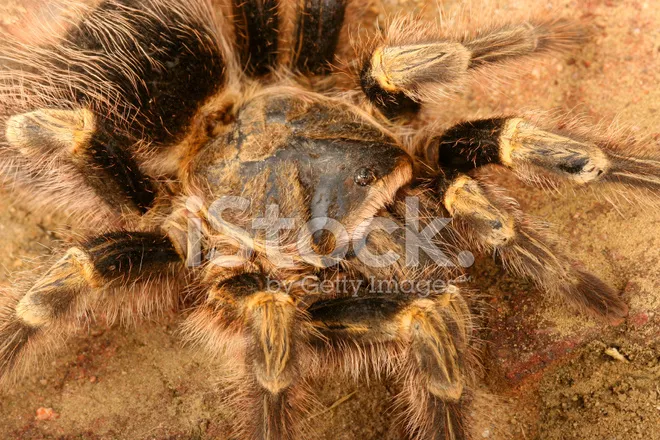Understanding the Chaco Golden Knee Tarantula
The Chaco Golden Knee Tarantula (Grammostola pulchripes) is a popular and relatively docile species, making it a favorite among tarantula enthusiasts. Native to the grasslands of Argentina and Paraguay, this terrestrial tarantula is known for its striking appearance and manageable care requirements. Understanding its natural habitat and physical characteristics is crucial for providing the best possible care. This guide will walk you through every step, from setting up its enclosure to feeding and handling, ensuring your Chaco Golden Knee thrives.
Origin and Habitat
In its natural habitat, the Chaco Golden Knee inhabits the grasslands and scrublands of South America. They are ground-dwelling spiders that create burrows in the soil or utilize existing crevices for shelter. The climate in their native regions is typically warm and semi-arid, with distinct wet and dry seasons. Replicating these conditions in captivity is vital for the well-being of your tarantula. The substrate, temperature, and humidity levels should mimic their natural environment to ensure they feel secure and thrive.
Physical Characteristics
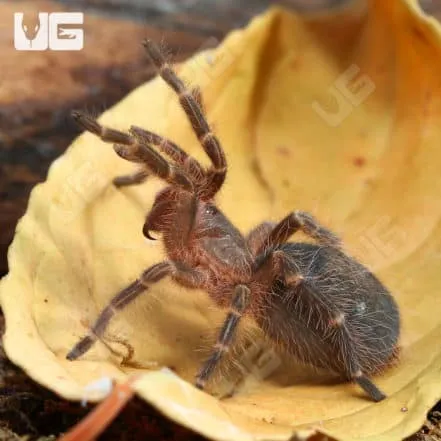
The Chaco Golden Knee is named for the golden-orange bands on its leg joints, which contrast beautifully with its dark body. Adult females can reach a leg span of up to 8 inches, while males are typically smaller. They have a relatively long lifespan, with females living for up to 20 years or more, and males typically living for several years. Their bodies are covered in small hairs called setae, which they use for sensory perception. These hairs also help them to climb and to detect vibrations in their environment. The tarantula’s size and coloration make it a visually appealing pet.
Setting Up the Perfect Enclosure
Creating a suitable habitat is one of the most critical aspects of Chaco Golden Knee tarantula care. The enclosure should provide a secure and comfortable environment that mimics their natural surroundings. The size of the enclosure, substrate, temperature, humidity, and the availability of hiding places are all essential considerations. A well-designed enclosure will not only keep your tarantula healthy but also allow you to observe its fascinating behavior. Proper setup is the foundation of successful tarantula keeping.
Choosing the Right Tank
A glass or plastic terrarium is ideal for housing your Chaco Golden Knee. The enclosure should be appropriately sized for the tarantula’s size. A juvenile tarantula can be housed in a smaller enclosure, such as a 5-10 gallon tank. As it grows, you’ll need to upgrade to a larger enclosure, possibly a 20-gallon long tank for an adult. The tank should have a secure, well-ventilated lid to prevent escape. Ensure the lid is tight-fitting to prevent escapes while allowing for adequate airflow. Ventilation is crucial to prevent mold and maintain healthy humidity levels.
Substrate Selection
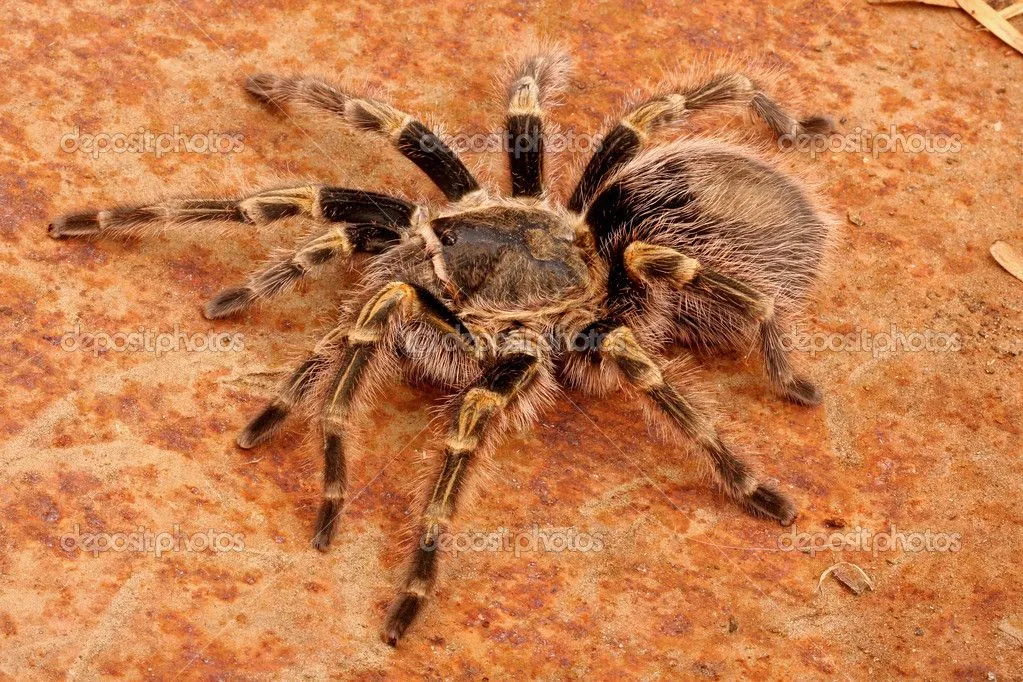
The substrate should be deep enough for the tarantula to burrow if it chooses. A mixture of coco fiber and peat moss works well, providing good moisture retention and allowing the tarantula to burrow. Avoid substrates like sand or gravel, as they can be difficult for the tarantula to burrow in and may not retain humidity effectively. The substrate should be kept slightly moist, not wet, to maintain the appropriate humidity levels. Replace the substrate periodically to prevent the buildup of waste and mold, keeping the environment clean and healthy.
Creating Hiding Places
Chaco Golden Knees are shy creatures and need hiding places to feel secure. Provide a hide, such as a piece of cork bark, a hollow log, or a commercially available tarantula hide. Place the hide on the substrate, ensuring it’s stable and won’t collapse. The hide should be large enough for the tarantula to comfortably retreat into. These hiding spots allow them to feel safe and reduce stress. Additional decorations like artificial plants or silk plants can also be added to enrich the environment and make it more visually appealing.
Maintaining Temperature and Humidity
Maintaining the correct temperature and humidity is crucial for the health of your Chaco Golden Knee. The ideal temperature range is between 75-85°F (24-29°C). A heat mat placed on the side of the enclosure can help maintain a stable temperature, but make sure not to overheat the tank. The humidity should be around 60-70%. You can monitor humidity with a hygrometer. To maintain humidity, lightly mist the substrate with water every few days. Ensure there is adequate ventilation to prevent the buildup of excess moisture and mold.
Feeding Your Chaco Golden Knee
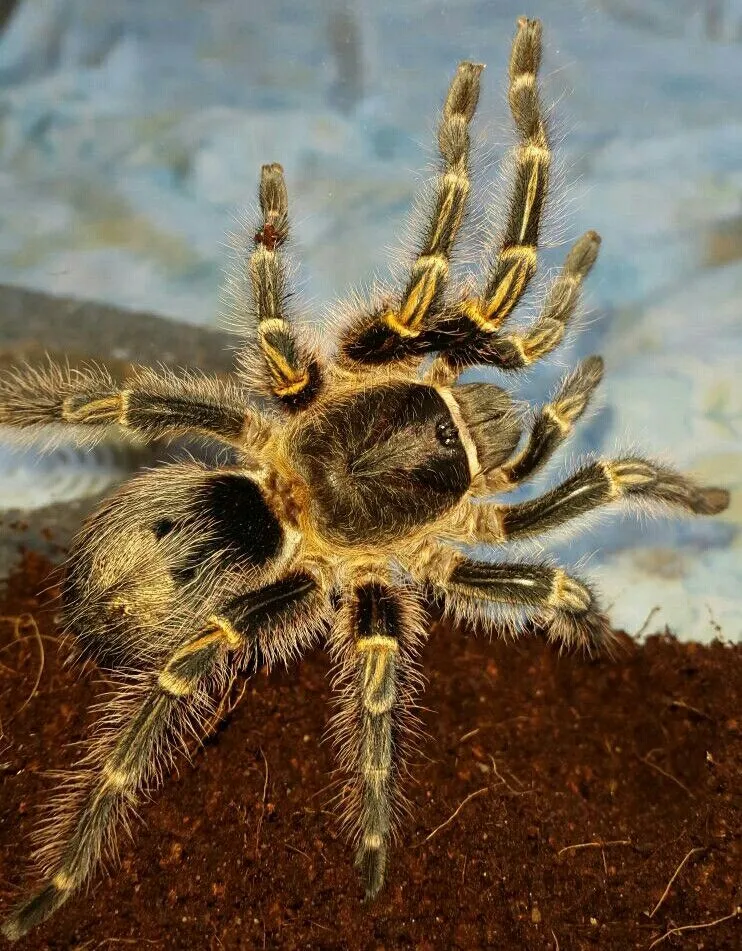
Proper feeding is essential to keep your Chaco Golden Knee healthy and thriving. Their diet consists primarily of insects, and the frequency of feeding depends on the tarantula’s age and size. Providing a balanced diet and monitoring their feeding habits is important to ensure they receive adequate nutrition. Understanding the nutritional needs of these spiders is fundamental to their well-being. A well-fed tarantula will be more active and exhibit normal behavior.
What to Feed
The primary diet for Chaco Golden Knees consists of insects. Crickets, roaches, mealworms, and dubia roaches are excellent choices. Ensure the insects are gut-loaded before feeding them to your tarantula. Gut-loading means feeding the insects nutritious food like vegetables and fruits before offering them to your tarantula, enriching their nutritional value. Avoid feeding wild-caught insects, as they may contain pesticides or parasites. Always remove uneaten insects from the enclosure to prevent stress on your tarantula and to avoid potential hazards.
Feeding Frequency
The feeding frequency depends on the tarantula’s age. Spiderlings should be fed 2-3 times a week. As they grow, you can reduce the feeding frequency to once a week or every other week. Adult tarantulas can be fed once every 1-2 weeks. Observe your tarantula’s abdomen. If it appears plump and round, it’s well-fed. If it refuses food, it may be in premolt. Adjust the feeding schedule based on their behavior and molting cycle. Provide fresh, clean water at all times.
Watering Your Tarantula
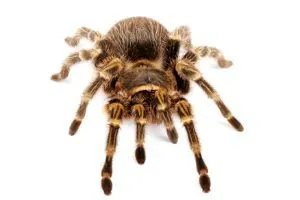
Fresh water is essential for your Chaco Golden Knee. Provide a shallow water dish with clean, fresh water at all times. The dish should be shallow enough to prevent the tarantula from drowning. Alternatively, you can mist the enclosure lightly with water every few days. Watch for excessive dehydration. A dehydrated tarantula may appear lethargic and have a wrinkled abdomen. Ensuring proper hydration is critical for the tarantula’s molting and overall health.
Handling and Interaction
While Chaco Golden Knees are known for being relatively docile, handling should be approached with caution. Handling is not essential for their well-being and can be stressful for the tarantula. Understanding the risks and proper techniques is crucial to avoid harm to both you and your pet. Observing your tarantula’s behavior and understanding when to avoid handling will contribute to a positive experience for both the owner and the tarantula. Avoid unnecessary handling.
When to Handle
It’s generally best to avoid handling your Chaco Golden Knee unless necessary, such as for enclosure maintenance or health checks. Avoid handling your tarantula after it has eaten or before molting, as it will be more vulnerable and stressed. If you need to handle your tarantula, do so only when it is calm and not showing any signs of aggression. Observe the tarantula’s behavior and body language to gauge its mood. Respecting their space and needs will contribute to a safer and more enjoyable experience for both parties. Handle them infrequently.
Proper Handling Techniques
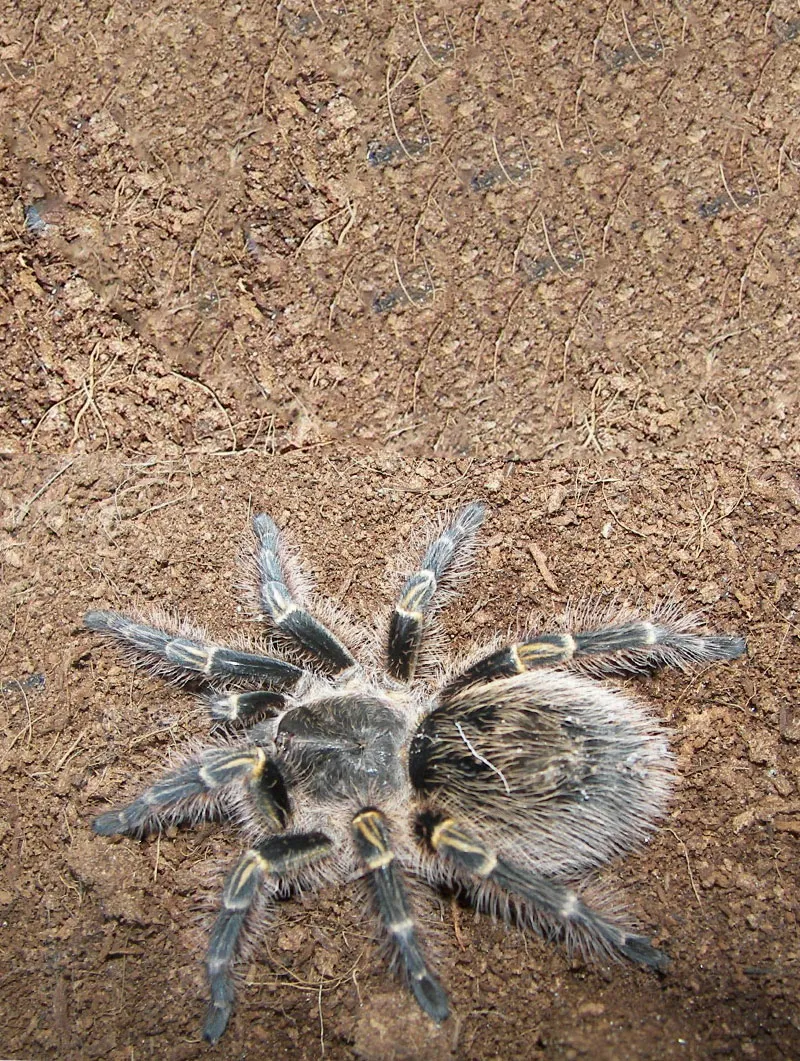
If you must handle your tarantula, always handle it close to the ground. Gently coax the tarantula onto your hand. Avoid sudden movements and loud noises, as these can startle the tarantula. Never try to grab or restrain it. If the tarantula starts to move away, allow it to do so. Always wash your hands thoroughly before and after handling your tarantula. Be aware of their urticating hairs. Even gentle contact can cause irritation.
Molting and Growth
Molting is a natural process where tarantulas shed their exoskeleton to grow. It’s a crucial part of their life cycle, and understanding the molting process is vital for providing appropriate care. The frequency of molting decreases as they age. Providing the right conditions during molting will increase the chances of a successful molt. Observing the molting process is also an interesting aspect of tarantula keeping.
Recognizing the Molting Process
Before molting, your tarantula may exhibit several signs. It may stop eating, become less active, and may seal itself in its hide. Its abdomen may appear darker, and the skin between its legs might become thinner. It may also lay on its back. These signs indicate that the tarantula is preparing to molt. This phase is critical, and disturbances should be kept to a minimum. The duration of the premolt stage varies.
Caring for Your Tarantula During Molt
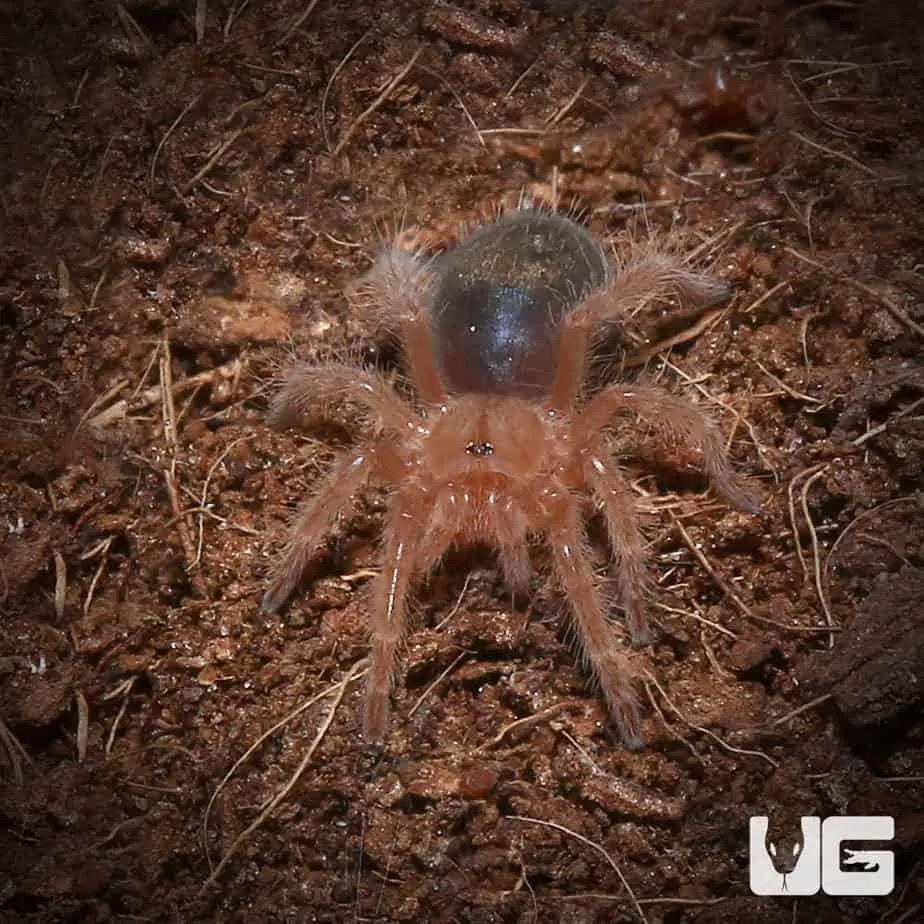
During molting, keep the humidity and temperature stable. Avoid disturbing the tarantula. Do not feed the tarantula during molting, and do not try to assist the molting process. After molting, the tarantula’s exoskeleton will be soft. It may take several days or weeks for the new exoskeleton to harden. Do not feed the tarantula until its fangs have hardened. Provide fresh water. Handle with extreme care. After molting, the colors of the tarantula will be brighter.
Common Health Issues and Prevention
While Chaco Golden Knees are generally hardy, they can be susceptible to certain health issues. Providing proper care and maintaining a clean environment can help prevent many common problems. Regularly inspecting your tarantula and enclosure will help you identify and address potential health concerns early on. Understanding potential health problems enables you to keep your tarantula happy and healthy. Prevention is often the best medicine.
Parasites and Diseases
Common health issues include mites, fungal infections, and dehydration. Mites can be introduced through contaminated substrate or insects. If you suspect mites, remove the tarantula to a clean enclosure and replace all the substrate. Fungal infections can occur if the enclosure is too humid. Maintain appropriate humidity levels and ensure good ventilation. Dehydration is another potential issue, which can result from lack of water. Provide fresh water at all times and mist the enclosure appropriately. If you observe any unusual behavior or symptoms, consult a veterinarian experienced in exotic animals.
Preventative Measures
To prevent health issues, always practice good hygiene. Clean the enclosure regularly. Use fresh, high-quality substrate and replace it as needed. Provide a varied diet of gut-loaded insects. Ensure the enclosure has adequate ventilation and maintain the correct temperature and humidity levels. Regularly monitor your tarantula for any signs of illness or parasites. Always quarantine new tarantulas before introducing them to your existing collection. Providing the correct care and environment will minimize the risk of health issues.
Final Thoughts on Chaco Golden Knee Care
Caring for a Chaco Golden Knee tarantula can be a rewarding experience. These tarantulas are relatively easy to care for, making them an excellent choice for both beginners and experienced keepers. By providing the right habitat, diet, and care, you can ensure your tarantula lives a long, healthy, and fulfilling life. Remember to always research and learn more about tarantulas and their needs. With proper care and attention, your Chaco Golden Knee can be a fascinating and enjoyable pet for many years to come. Enjoy the journey of tarantula keeping.
